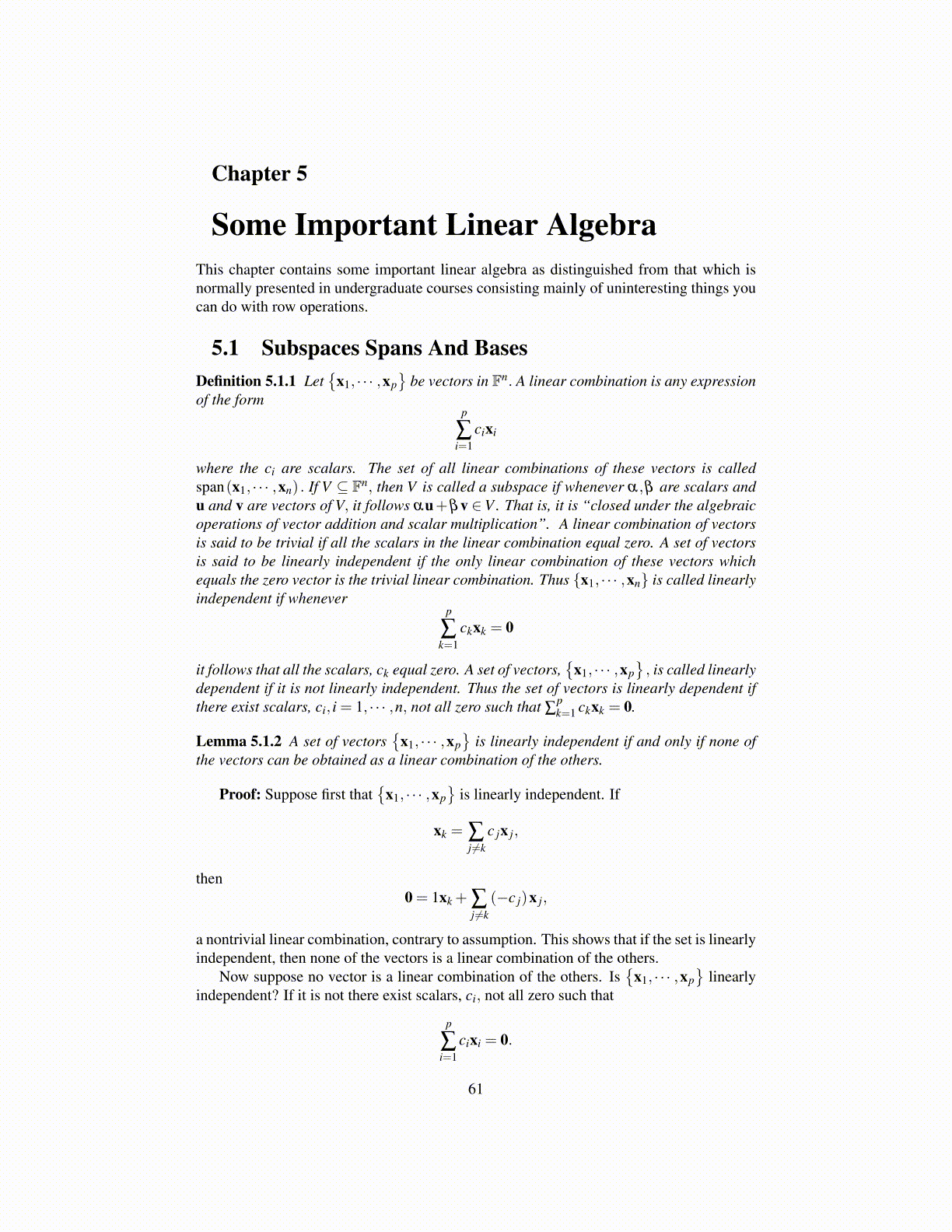
Chapter 5
Some Important Linear AlgebraThis chapter contains some important linear algebra as distinguished from that which isnormally presented in undergraduate courses consisting mainly of uninteresting things youcan do with row operations.
5.1 Subspaces Spans And BasesDefinition 5.1.1 Let
{x1, · · · ,xp
}be vectors in Fn. A linear combination is any expression
of the formp
∑i=1
cixi
where the ci are scalars. The set of all linear combinations of these vectors is calledspan(x1, · · · ,xn) . If V ⊆ Fn, then V is called a subspace if whenever α,β are scalars andu and v are vectors of V, it follows αu+βv ∈V . That is, it is “closed under the algebraicoperations of vector addition and scalar multiplication”. A linear combination of vectorsis said to be trivial if all the scalars in the linear combination equal zero. A set of vectorsis said to be linearly independent if the only linear combination of these vectors whichequals the zero vector is the trivial linear combination. Thus {x1, · · · ,xn} is called linearlyindependent if whenever
p
∑k=1
ckxk = 0
it follows that all the scalars, ck equal zero. A set of vectors,{
x1, · · · ,xp}, is called linearly
dependent if it is not linearly independent. Thus the set of vectors is linearly dependent ifthere exist scalars, ci, i = 1, · · · ,n, not all zero such that ∑
pk=1 ckxk = 0.
Lemma 5.1.2 A set of vectors{
x1, · · · ,xp}
is linearly independent if and only if none ofthe vectors can be obtained as a linear combination of the others.
Proof: Suppose first that{
x1, · · · ,xp}
is linearly independent. If
xk = ∑j ̸=k
c jx j,
then0 = 1xk + ∑
j ̸=k(−c j)x j,
a nontrivial linear combination, contrary to assumption. This shows that if the set is linearlyindependent, then none of the vectors is a linear combination of the others.
Now suppose no vector is a linear combination of the others. Is{
x1, · · · ,xp}
linearlyindependent? If it is not there exist scalars, ci, not all zero such that
p
∑i=1
cixi = 0.
61